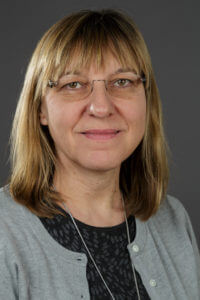 A warm welcome to Dr Jane Garrison, who joins the HtV team as a post-doctoral research associate in neuroscience. Jane writes:
A warm welcome to Dr Jane Garrison, who joins the HtV team as a post-doctoral research associate in neuroscience. Jane writes:
I am delighted to be joining the Hearing the Voice team as a post-doctoral researcher based in Cambridge, where I will continue my work as a neuroscientist with Dr Jon Simons in the Memory Lab within the Department of Psychology. The focus of my research is on understanding the mechanisms of reality discrimination failure in hallucinations – how is it that information generated by the brain can be perceived to come from an external source? A key study from my PhD, carried out in together with HtV researchers in Durham, found differences in a fold in the cortex of the brain known as the paracingulate sulcus, in patients with schizophrenia with hallucinations compared to those without. This is an area of the brain that is involved in reality monitoring which is the cognitive ability to know whether something is real or imagined.
My initial project under the HtV grant will be a study with Professor Paul Allen at the University of Roehampton to investigate this further. We plan to use real-time functional magnetic resonance imaging in a novel neurofeedback paradigm to observe whether healthy participants improve their reality monitoring ability after learning to increase brain activity in the region of the paracingulate sulcus. If successful we hope to extend this research to investigate its possible use in the treatment of hallucinations.
We are delighted to welcome Jane to the Hearing the Voice team and look forward to working with her over the eighteen months. More information about Jane’s research can be found in this paper:
Garrison, J.R., Fernyhough, C., McCarthy-Jones, S., Haggard, M., The Australian Schizophrenia Research Bank & Simons, J.S. (2015). Paracingulate sulcus morphology is associated with hallucinations in the human brain. Nature Communications, 6, 8956.
